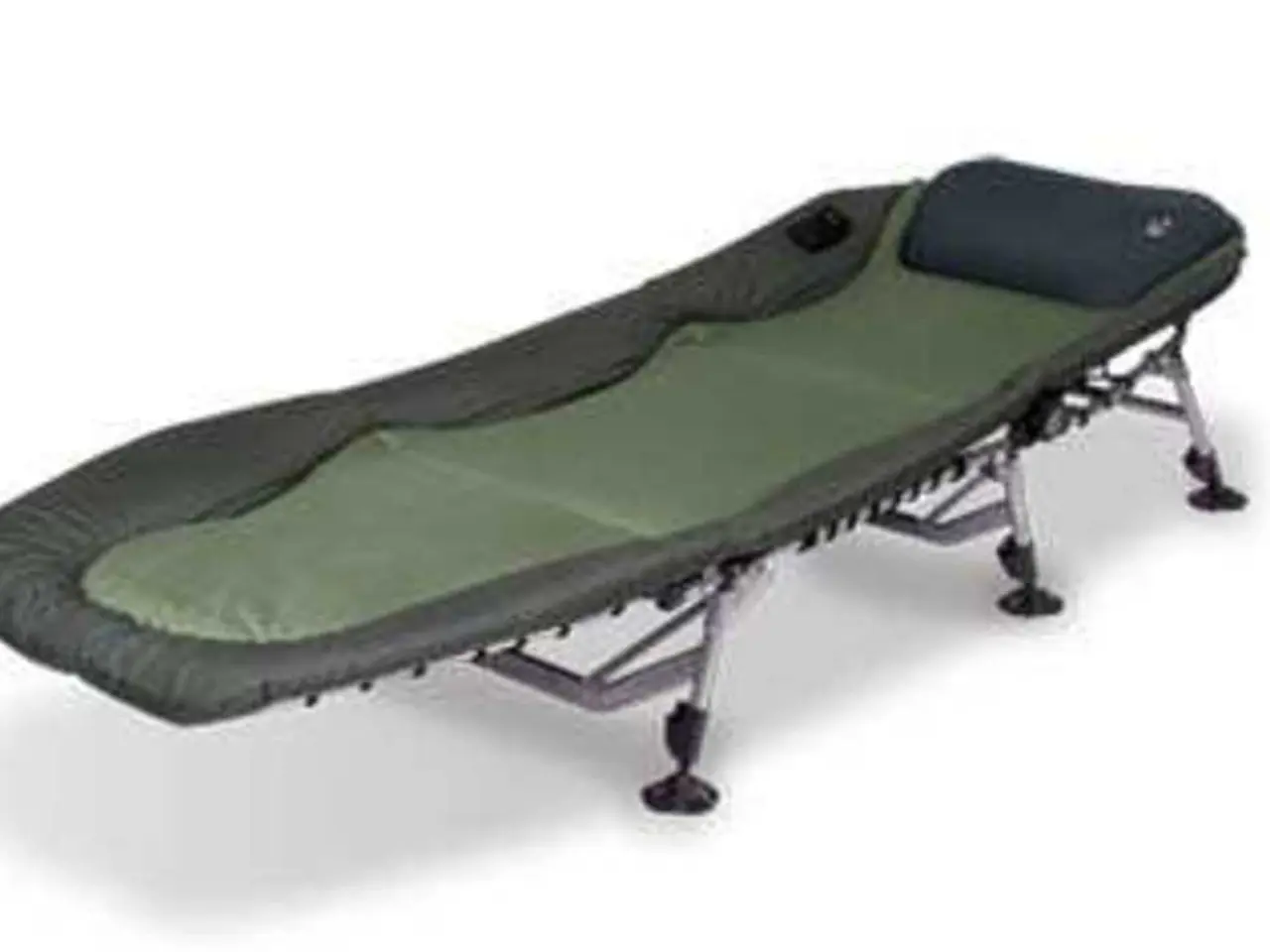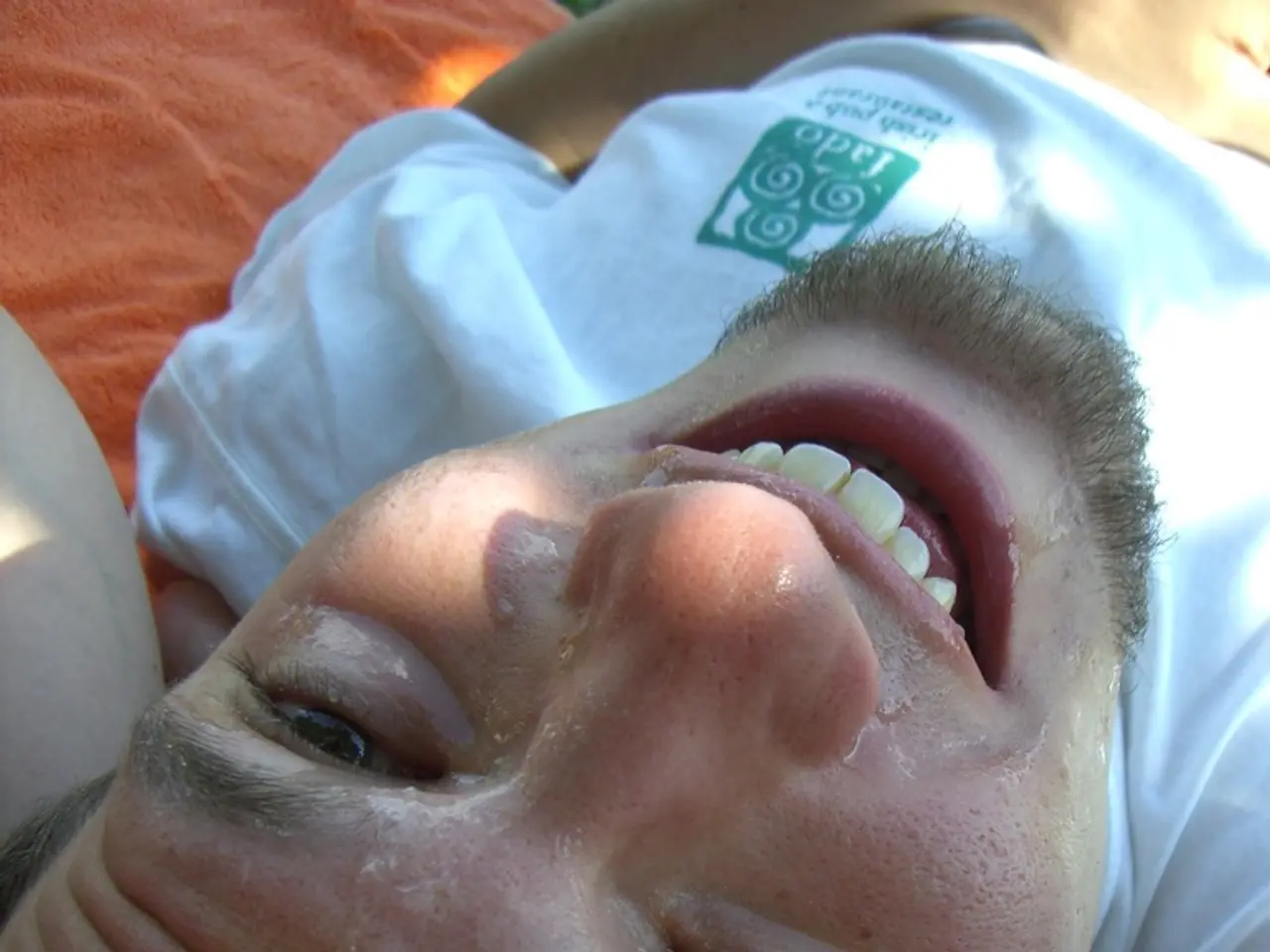Heel pain alleviation exercises: Discover 6 plantar fasciitis stretches
In a bid to alleviate the discomfort caused by plantar fasciitis, a common foot condition characterised by heel pain, various exercises have been recommended by health professionals. These exercises aim to stretch and strengthen the affected muscles, providing relief and promoting healing.
Firstly, the Plantar Fascia Stretch is a simple yet effective exercise. Sit with one foot crossed over the opposite knee, pull your toes back towards your shin until you feel a stretch in the arch of the foot. Massage the plantar fascia from heel to toes for added relief. Repeat this stretch 10 times per session, 3 times daily, to increase flexibility and loosen the tight fascia.
Calf stretches, such as the Seated Towel Calf Stretch, are also beneficial. Sit with your leg extended, loop a towel around the ball of your foot, and gently pull the towel towards you while keeping your heel on the floor. Hold for about 15-30 seconds and repeat 3 times. Tight calf muscles can increase tension on the plantar fascia, so stretching them reduces this strain and supports healing.
Heel raises are another exercise that strengthens the calf muscles, improving foot support and reducing plantar fascia stress. Stand with feet shoulder-width apart near a wall or chair for balance, slowly rise onto your toes, and lower your heels below the level of the step if possible. Repeat 10-15 times for 2-3 sets.
Toe curls or picking up objects with the toes strengthen the intrinsic muscles in the foot that support the arch and help reduce plantar fascia load. Place small objects on the floor and use your toes to pick them up and place them in a container. Repeat for 5-10 minutes.
The Short Foot Exercise strengthens the foot’s arch muscles, enhancing foot stability. While seated or standing, try to “shorten” the foot by contracting the arch without curling your toes—lift the arch upward. Hold for 5 seconds and release. Repeat 10-15 times.
Prone Leg Lifts, or hip and core strengthening exercises, help correct gait mechanics and unload the plantar fascia. Lie face down and slowly lift one leg off the ground, keeping your back neutral. Repeat 10-15 times per side, 2-3 sets.
In summary, these exercises target both the symptoms and underlying mechanical causes of plantar fasciitis, aiming to reduce pain and improve function. Consistency is key, with exercises best performed daily or multiple times a day for optimal results. Start gently and gradually increase repetitions and hold times as pain allows. For added relief, pair exercises with massage of the plantar fascia.
If heel pain persists despite exercises, consulting a podiatrist or physical therapist is recommended for tailored treatment options. This multi-faceted approach, combined with consistent daily stretches, proper footwear, activity modification, supportive footwear, arch-supporting inserts, and taking anti-inflammatory medication, can aid in recovery from plantar fasciitis.
For those interested in shoe inserts, it is advisable to consult a podiatrist for more information. Nonsteroidal anti-inflammatory drugs (NSAIDs) can help reduce both pain and inflammation associated with plantar fasciitis. However, it's important to note that plantar fasciitis can become a chronic condition for some people, with symptoms persisting for a year or longer.
In addition to these exercises, a seated foot stretch can provide relief from muscle tightness in the plantar fascia, while curling a hand towel or washcloth with the toes can stretch the foot and calf muscles. Remember, while these exercises can offer substantial relief, they should not replace professional medical advice or treatment. Always consult with a healthcare provider for personalised guidance and treatment options.
[1] American College of Foot and Ankle Surgeons. (2021). Plantar Fasciitis. Retrieved from https://acfas.org/heel-pain/plantar-fasciitis/ [2] Mayo Clinic. (2021). Plantar fasciitis. Retrieved from https://www.mayoclinic.org/diseases-conditions/plantar-fasciitis/diagnosis-treatment/drc-20371796 [3] Foot Health Facts. (2021). Plantar Fasciitis. Retrieved from https://foothealthfacts.org/foot-conditions/plantar-fasciitis
- Aq (advice): To increase flexibility and loosen the tight fascia in plantar fasciitis, the Plantar Fascia Stretch exercise, which involves pulling toes back towards the shin, is recommended three times daily.
- Pain (symptom): Calf stretches, such as the Seated Towel Calf Stretch, can help decrease the heel pain caused by plantar fasciitis by reducing the strain on the affected plantar fascia.
- Prep (prepare): Toe curls or picking up objects with the toes strengthen the intrinsic muscles in the foot, reducing plantar fascia load and preparing for proper foot function.
- Health-and-wellness (general well-being): Consistency is crucial for optimal results when performing exercises for plantar fasciitis daily or multiple times a day.
- Mental-health (psychological state): Pairing exercises with massage of the plantar fascia can aid in recovery, but always consult with a healthcare provider for personalized guidance and treatment options.
- Sciences (discipline): The American College of Foot and Ankle Surgeons, Mayo Clinic, and Foot Health Facts provide scientific insights on plantar fasciitis management. [1 - 3]
- Fitness-and-exercise (physical activity): Heel raises strengthen the calf muscles, improving foot support and reducing plantar fascia stress, while Prone Leg Lifts help correct gait mechanics and unload the plantar fascia.
- Nutrition (food): For added relief, try including foods rich in omega-3 fatty acids, calcium, and vitamin D in your diet to support overall foot health and recovery from plantar fasciitis.
- Copd (chronic obstructive pulmonary disease): Although not directly related, it's essential to highlight that poor foot health, such as plantar fasciitis, can lead to atopic dermatitis, which is associated with COPD, asthma, hay fever, and eczema, emphasizing the interconnected nature of health-and-wellness, mental-health, and fitness-and-exercise.




